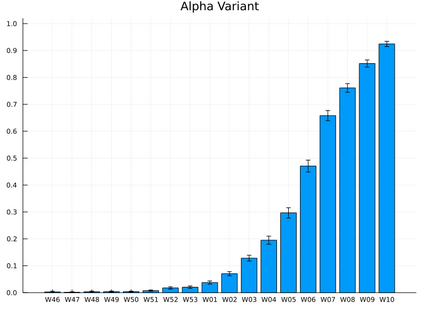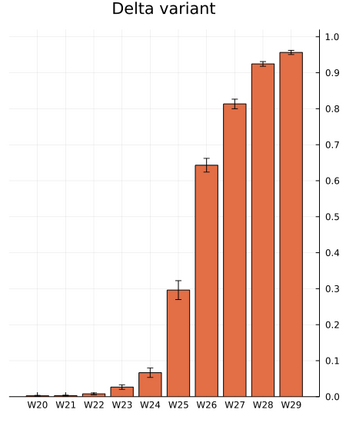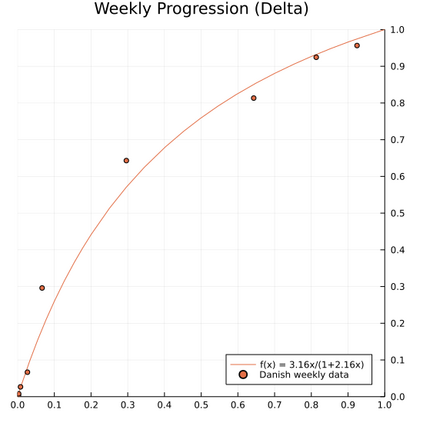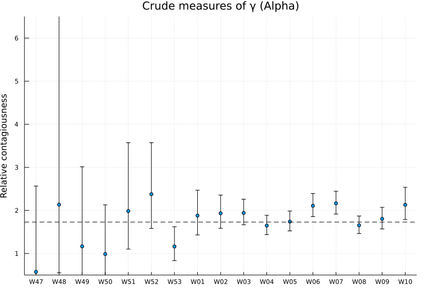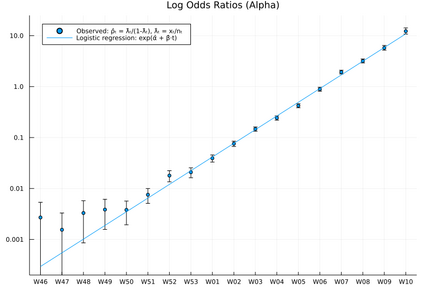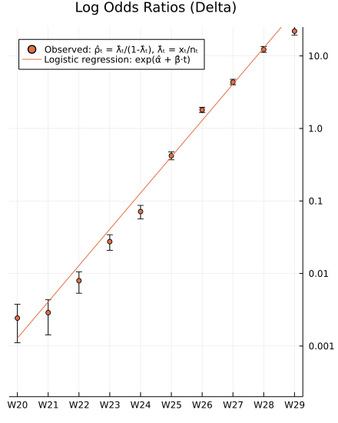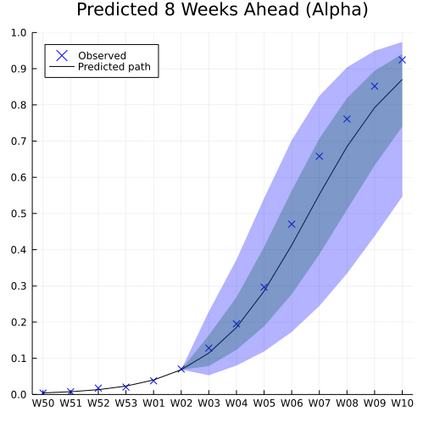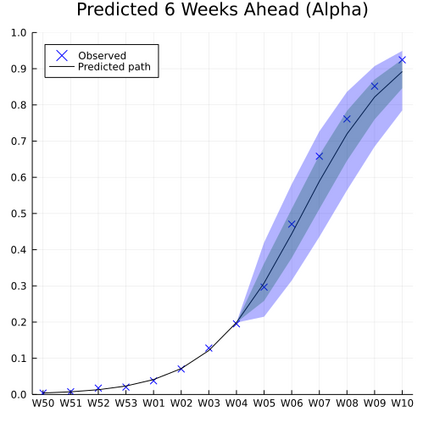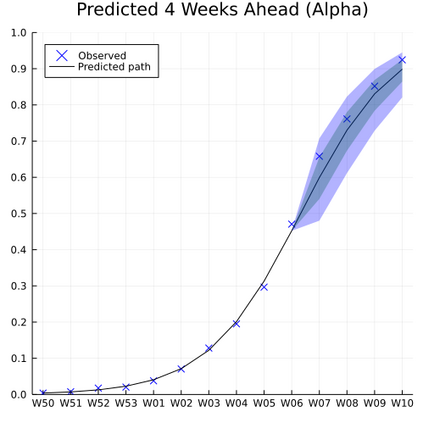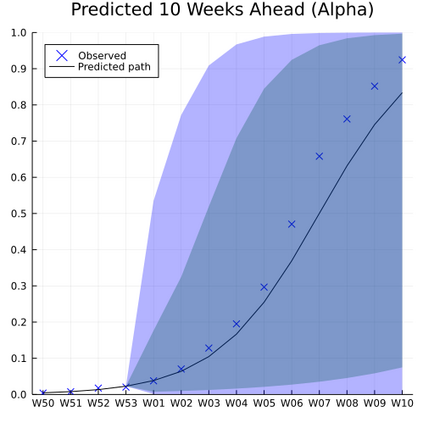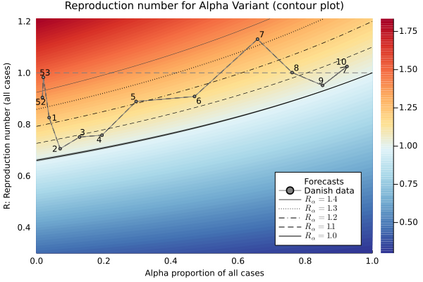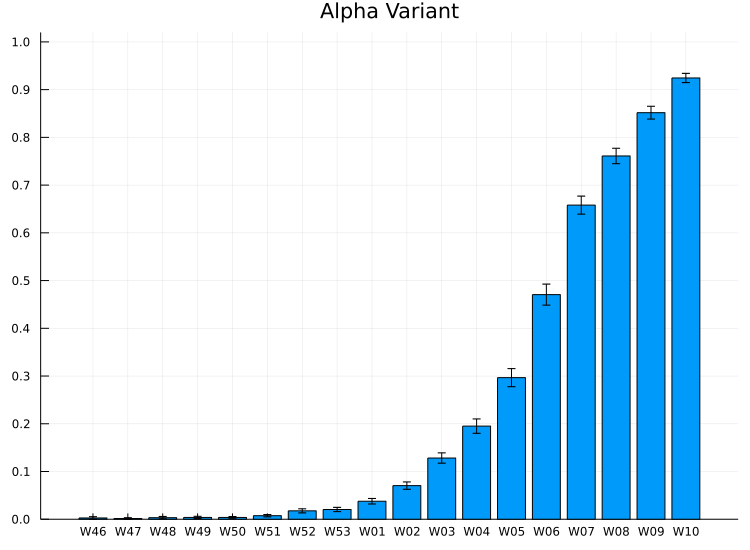We propose a simple dynamic model for estimating the relative contagiousness of two virus variants. Maximum likelihood estimation and inference is conveniently invariant to variation in the total number of cases over the sample period and can be expressed as a logistic regression. Using weekly Danish data we estimate the Alpha variant of SARS-CoV-2 to increase the reproduction number by a factor of 1.51 [CI 95%: 1.50, 1.53] relative to the ancestral variant. The Delta variant increases the reproduction number by a factor of 2.17 [CI 95%: 1.99, 2.36] relative to the Alpha variant and a factor of 3.28 [CI 95%: 3.01, 3.58] relative to the ancestral variant. Forecasting the proportion of an emerging virus variant is straight forward and we proceed to show how the effective reproduction number for the new variant can be estimated without contemporary sequencing results. This is useful for assessing the state of the pandemic in real time as we illustrate empirically with the inferred effective reproduction number for the Alpha variant.
翻译:我们提出一个简单的动态模型来估计两种病毒变异的相对传染性。最大可能性估计和推论在抽样期内容易改变病例总数,并可以作为一种后勤倒退来表示。我们利用丹麦周报数据估计SARS-COV-2的阿尔法变体,以将复制数比祖传变体增加1.51倍[CI 95%:1.50,1.53]。三角洲变体将复制数比阿尔法变异体增加2.17倍[CI :1.99, 2.36],比祖传变体增加3.28倍[CI:95%,3.01,3.58]。预测新出现的病毒变异体的比例是直接向前的,我们继续显示如何在没有当代顺序结果的情况下估计新变异体的有效复制数。这对实时评估该大流行病的状况很有帮助,因为我们用阿尔法变体的推断有效复制数来进行实验性说明。

